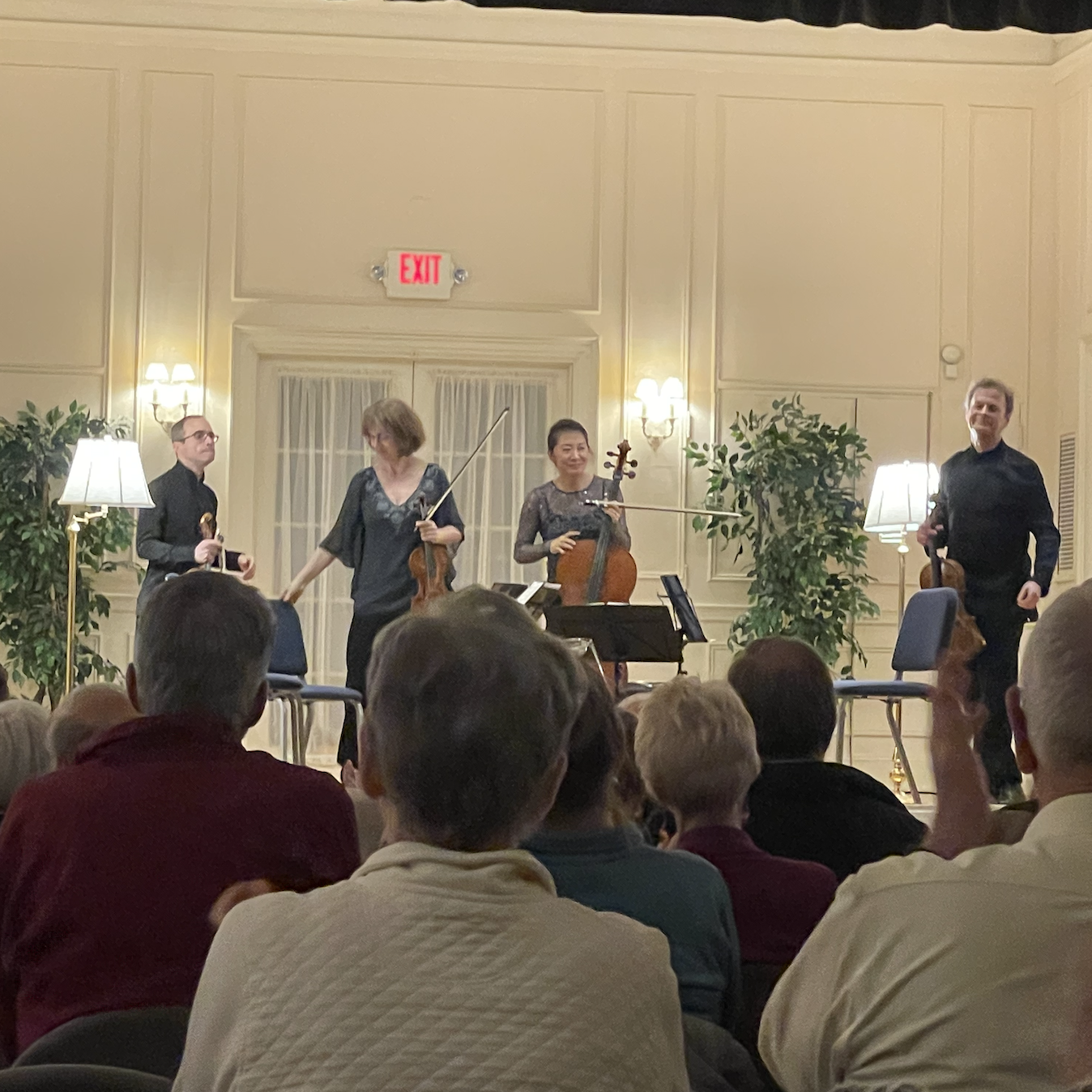Chamber music is a classical music genre performed by a smaller group of musicians than you would see in an orchestra. Historically (and contemporaneously), these concerts can often be performed in what we used to call chambers, or small rooms, in a home. More often than not, however, chamber music is now featured on the same stages as orchestras, choirs, and other large ensembles.
 In this blog post, we will take a quick journey through time to explore the evolution of chamber music in the United States. I’ll also briefly share an incredible example in the Brentano String Quartet, recently featured on the season-closing performance for the Friends of Chamber Music of Reading.
In this blog post, we will take a quick journey through time to explore the evolution of chamber music in the United States. I’ll also briefly share an incredible example in the Brentano String Quartet, recently featured on the season-closing performance for the Friends of Chamber Music of Reading.
The early years of chamber music in the United States were marked by the arrival of European musicians and composers. One of the first notable figures was Alexander Reinagle, a British composer who settled in Philadelphia in the 1780s. Reinagle was instrumental in introducing the genre of chamber music, sharing pieces from composers such as Haydn and Mozart. During his tenure in Philadelphia, he also composed many works for small ensembles (a term we often use interchangeably with chamber ensembles).
As the 19th century progressed, chamber music became more popular in the United States, with many European composers and performers traveling to America to perform and teach. Louis Spohr, a German-born violinist and composer, first visited the United States in 1824. In addition to his compositions, he is often remembered for preserving works by Bach and Handel, both masters of the chamber music scene. A notably fun aside – Spohr is also said to have practiced with Beethoven at Beethoven’s home. Of this time, he is said to have shared that Beethoven’s piano was out of tune and that the master’s playing was harsh and careless. Everyone’s a critic!
The mid-and late 19th century saw a rise in the popularity of chamber music, with many American composers and performers receiving international recognition. Charles Ives was one of the most famous American composers of this period. His works, such as his Piano Trio, created a unique blend of European classical traditions with American folk music and popular music. This trend would continue with famous composers like Dvořák, Copland, and others.
The 20th century saw a continued evolution of chamber music in the United States with constantly evolving styles, techniques, and compositional forms. One of the most significant developments during this period was the rise of experimental and avant-garde music, which challenged traditional notions of melody, harmony, and structure. Composers like John Cage, Morton Feldman, and Earle Brown were at the forefront of this movement, and their works influenced many American composers of the time.
In recent years, chamber music has continued to evolve and thrive in the United States. In Philadelphia, we have our own Philadelphia Chamber Music Society, the Chamber Orchestra of Philadelphia, and numerous regional organizations, including the Friends of Chamber Music of Reading. I was recently afforded the opportunity to attend their season-closing concert featuring the internationally acclaimed Brentano String Quartet.
This performance gave a musical history similar to the written one I’ve just shared. The program included Haydn’s Quartet in C Major (1781), Beethoven’s String Quartet in B-Flat Major (1826), and James MacMillan’s Memento (1994) and For Sonny (2011/2013). This program allowed the audience to experience the history of chamber music in one sitting – the Classical sensibilities of Haydn, the powerful and dramatic romantic energy of Beethoven, and the entirely modern, sometimes challenging music of James MacMillan. I highly suggest a YouTube search if you’ve not heard of the Brentano Quartet. They are one of the most enigmatic, dynamic, and visually engaging chamber groups I’ve enjoyed seeing live. In particular, their cellist, Nina Maria Lee, is one of the most expressive performers I’ve ever seen on stage.
Chamber music plays a vital role in our current musical fabric, not only because of the rich history of incredible music written for these groups but also for the versatility and adaptability they provide that orchestras and other large ensembles might not. Keep an eye out for the extensive chamber offerings in Philadelphia and surrounding areas this next concert season – you won’t be disappointed!








